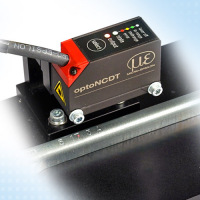
Monitoring embossment depth
In embossing machines, car body IDs are punched into the vehicle frame. The embossment depth must be in a defined tolerance range. In order to position the embossing tool, laser triangulation sensors from Micro-Epsilon detect the distance between the embossing tool and the component. After the embossment is finished, the sensor measures the profile of the embossment and ensures that all characters are embossed to the required depth. |
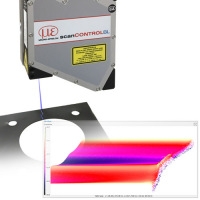
Inline burr measurement on sheet edges in body manufacture
In order to avoid corrosion, continuous and error-free corrosion protection is a critical factor in the painting process. As the thickness of the applied painting on burrs can only be determined under challenging limitations, it is a decisive advantage when the burrs are recognized early in the production process before the corrosion protection and other paint layers are applied. In contrast to fixed solutions that enable a random test, Micro-Epsilon offers its scanCONTROL 2910-10/BL Plug & Play system which provides the required precision with its high point resolution of approx. 8µm along the laser line in order to recognize burrs reliably even during inline measurements. |
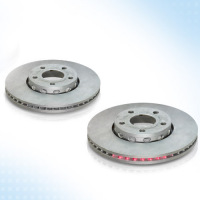
Distinction of brake discs
When processing car brake discs, the correct brake disc must be chosen before each stage of production in order to assign them to the manufacturer's different models. Laser scanners are used to recognize and classify the brake discs. The challenge of brake disc distinction is that the test objects are the same with regard to form, height and diameter. The gapCONTROL laser scanners are used for 100 % recognition and subsequent sorting. The only distinctive feature is a gap between two ventilation blades that signifies the respective models of the manufacturer. |
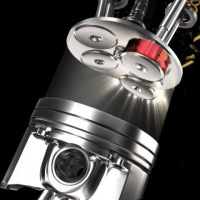
Valve lift measurement in the MultiAir cylinder
The MultiAir cylinder procedure patented by FIAT / Schaeffler controls individual valves independently of the camshaft. An electro-hydraulic control system provides fully variable valve control. Therefore, the stroke and the opening/closing times of the inlet valve are freely controllable. This reduces fuel consumption and CO2 emissions with a simultaneous increase in engine performance and torque. During the end-of-line inspection of the MultiAir components, a test bench simulates the conditions inside the engine. Eddy current sensors from Micro-Epsilon measure the exact valve lift. |
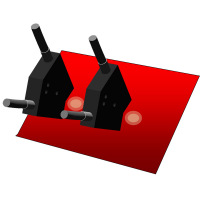
Color comparison between parking sensor and body shell
Car attachments such as parking sensors are painted separately. However, during assembly there must be no difference in color between the parking sensor and the bumper, which means the two colors must be identical. The colorSENSOR from Micro-Epsilon enables a direct color comparison between the parking sensor and the rear bumper. |
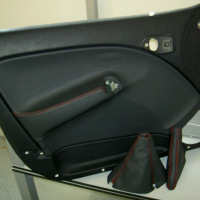
Color recognition for seams in automotive interiors
In the assembly line of a well-known German car manufacturer, similar car interior parts must be differentiated from each other based on the respective seam color. Previously, professional testers have visually checked the seams. In order to automate the process and to optimize it economically, colorSENSORs from Micro-Epsilon are now being used. |
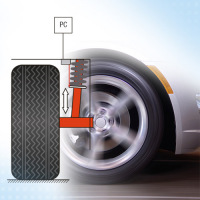
Vibration displacement measurement in road tests
In the automotive industry, testing the chassis is a prerequisite for driving safety. Here, sensors are required which can also withstand the high demands of road tests. For example, draw-wire sensors are mounted in parallel to the shock absorbers for the vibration displacement measurement and the data is recorded under varying road-surface properties. The displacement signal obtained is differentiated to calculate the vibration velocity and vibration acceleration. |
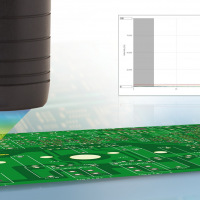
Thickness measurement of varnish on PCBs
In order to protect PCBs from environmental influences such as humidity, they are coated with a protective clear varnish. This ensures error-free operation. The automotive industry in particular demands a minimum thickness for this protective coating. Up to now, it was not possible to perform a measurement without destroying the target. Confocal sensors from Micro-Epsilon solve this measurement task without making contact with the target and therefore in a non-destructive manner. They provide the thickness values in real time. confocalDT IFS 2405 confocal sensors with a measuring range of 1 mm are used. These sensors are characterized by their extremely small measuring spot size of only 8 µm and excellent precision for measuring thin layers. |

Measuring the height of pressed-in pins (Press-Fit Technology)
In addition to high accuracy with miniature dimensions, the production of electronic components also requires high speed processes that provide the highest quality. Therefore, many production steps in this area are highly automated. The company Automationpro has developed a machine that inspects the height of pressed-in contact pins on PCBs (Press Fit Technology) inline immediately after the pressing process. If the pins are not completely pressed through the openings, it is not possible to establish contact with other components, which may cause failure. Therefore, a scanCONTROL profile sensor scans each PCB in three dimensions. During this pressing process, the PCBs are fixed on a rotary table which moves the assembled module from the press-in position to the scanning position. The scanCONTROL is being moved by an actuator connected to an encoder which is being used for triggering the line scanner to ensure regular profile distances. Depending on the cycle time of the process, the component undergoes a complete scan within 7 seconds, generating 1,280 points per profile. |
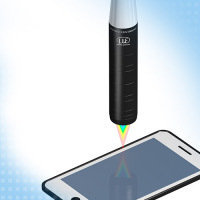
Assembly gap of display glass
After the assembly process of smartphone displays, it is important to inspect the mounting tolerances of the components in order to achieve continuous quality in all production batches. Confocal chromatic sensors travel over the components and inspect the gap with extremely high accuracy. |
